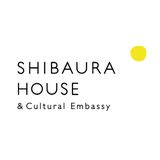In March 2025, I had the opportunity to travel to Tokyo on behalf of Pakhuis de Zwijger to take part in a collaborative workshop series hosted by SHIBAURA HOUSE. Pakhuis de Zwijger has previously partnered with SHIBAURA HOUSE through an earlier exchange project that was part of the Designing Cities for All (DCFA) programme, and I’ve had the pleasure of being involved in that collaboration. What followed was an inspiring week of cultural exchange, creative dialogue, and deep reflection on how design and community intersect across different cultural contexts.
About SHIBAURA HOUSE
SHIBAURA HOUSE is an innovative cultural hub established in 2011 within a renovated paper factory building. The company’s business has changed to keep in harmony with the changes in the times and in the social environment. Today, it operates the original creative business, along with new cultural creative projects that are rooted in the local community. It also serves as a dynamic space that fosters cultural dialogue, creativity, and community engagement. With various facilities including co-working areas, artist residencies (in near future), offices, and a welcoming café, SHIBAURA HOUSE is designed to bring people together and encourage meaningful interactions across different cultures.

My experience there was enriching, emphasising cultural dialogue, creativity, and community-building. Throughout my time at SHIBAURA HOUSE I engaged in various activities designed to explore how individuals from different cultural backgrounds can communicate, collaborate, and learn from each other. We had the opportunity to visit local festivals and markets, enjoying Japan’s rich culinary traditions, and experiencing first-hand how food can be a meaningful gateway to understanding culture.
The workshop series was led by Madoka Minamisawa from SHIBAURA HOUSE and Bobo Ophuis from Open Research Amsterdam, and Pakhuis de Zwijger. We explored personal identities, cultural differences, and the nuances of communication across cultures. The concept of the “Banana Generation,” (defined as yellow/East Asian from outside and white/western from inside) explained by Bobo, became a meaningful metaphor for different experiences in multicultural contexts. Madoka emphasized that genuine dialogue requires openness, vulnerability, and empathy. She references a powerful quote by Bart Cosijn from the Estonian Dialogue Academy (as part of the interview series with Dutch Creatives): “The best dialogue is when you leave out the notion of time,” highlighting the depth of meaningful conversations.

The key focuses of the first workshops were:
- Challenges in intergenerational communication.
- Differences in conversational/dialogue styles between cultures
- The importance of vulnerability, openness, and empathy in cross-cultural interactions.
We discussed essential topics such as intergenerational communication, cultural differences in conversational styles, particularly within the educational system, and the crucial need for creating spaces that encourage open dialogue. These discussions deepened our understanding of how cultural context shapes interactions and the critical importance of fostering spaces where everyone can express themselves freely.
Our final gathering included preparing and sharing a community meal, which symbolized unity and cooperation. More than just a meal, it was an expression of shared values, mutual respect, and a common vision for an inclusive and connected future.
Creative Talks at UNIVERSITY of CREATIVITY
One of the highlights of this journey was the visit to the University of Creativity, an inspiring cultural entreprise. UoC is a creative community consisting of different research fields, a big number of members and over 100 creative leaders.
During our visit, we learnt about their unique approach in interdisciplinary dialogue and collaboration. Established five years ago and supported by a major advertising firm, they host regular seminars known as “Mandala,” where experts from various fields gather several times a week to exchange ideas. Unlike SHIBAURA HOUSE, the UNIVERSITY of CREATIVTY is not publicly accessible. Through their events, they facilitate meaningful conversations around critical issues like climate change and regeneration, recognizing the importance of these topics for the future.

This entire experience is part of a broader initiative titled “Stretch Y(our) Future,” which aims to inspire and support young (Japanese among others) people. This project aims to produce a publication sharing real stories and insights from Dutch creative professionals, as well as voices from the younger generation cultivating their life path. Ultimately, these experiences will form part of a book focused on community design and intercultural dialogue.
Joining this series of workshops showed us the power of cultural exchange and creative dialogue. This experience not only inspired us but also deepened our understanding of the importance of connecting different cultures through shared creative experiences.
We are excited about the continued impact of these interactions and look forward to seeing how this initiative inspires young minds and strengthens intercultural ties in the future.







